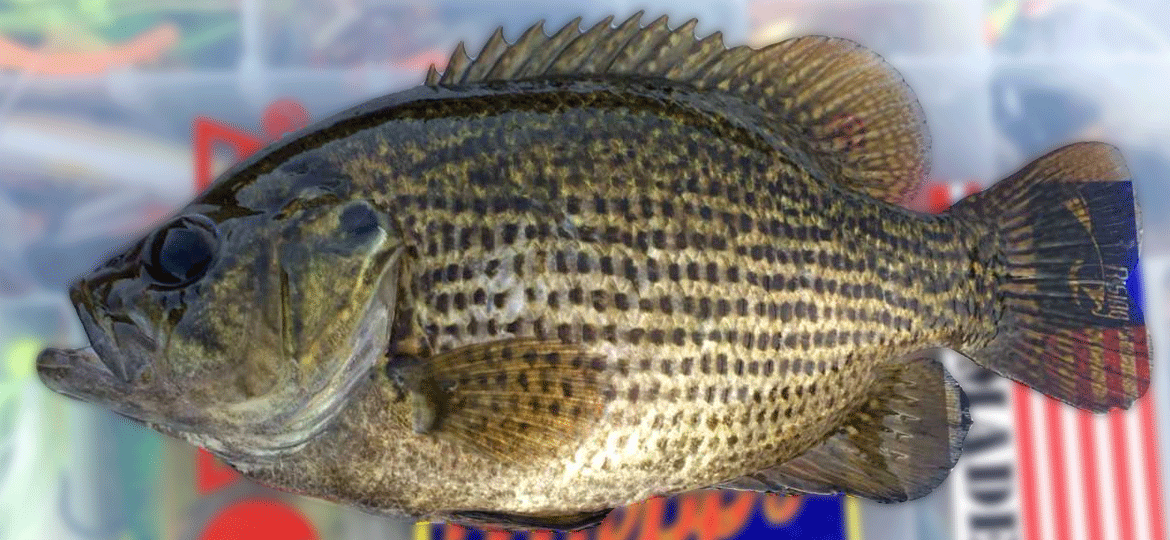
The rock bass (Ambloplites rupestris) has a deep, somewhat oval body with a large, slightly upturned mouth. They have large eyes with a distinguishable red iris. Similar to other sunfish, these fish have a double dorsal fin with a spiney front half and soft back half. Adults will exhibit dark horizontal lines made up of small spots over a brassy brown background shading into a lighter underbelly. Most individuals caught and observed are around six to seven inches, but can grow up to 12 inches in length and live up to 12 years old.
Rock bass inhabit the St. Lawrence River, Lake Champlain and Hudson Bay drainages down to northern Georgia and Alabama. They are a common species found throughout Vermont. They have also been introduced outside of their native range including into the Connecticut River drainage.
Habitat
Rock bass will congregate around shallow rocky areas in still water habitats and slower, warm areas of rivers and streams. Often, individuals live near vegetation, logs, boulders, roots, and other forms of cover.
They have been observed to be mostly intolerant of acidic waters and low dissolved oxygen levels. Habitat degradation also appears to have a great impact on populations.
Reproduction
Spawning usually commences when water temperatures reach 60 to 70°F in June. Males will prepare the nest by moving to shallow water and digging up a small section in the ground. There appears to be no preference for bottom material in the spawning process.
Nests are generally two feet in diameter or less and are usually positioned close to one another. Three thousand to 11,000 adhesive eggs are deposited into one or more nests during fertilization. After sinking to the bottom of the nest, the eggs will incubate under the protection of the male who fans them for up to two weeks even after they hatch.
Diet
Rock bass primarily feed on crayfish and small fish but have also been observed to consume aquatic insect larvae, amphipods, and other crustaceans. They have, at times, been seen consuming their own young.
Management
This species does not have a minimum length or daily limit. Work conducted by Vermont Fish & Wildlife staff to help conserve these populations includes, but is not limited to:
- Improving aquatic organism passage.
- Protecting and restoring fish habitat.
- Monitoring local fish communities.
- Engaging in regulatory proceedings, providing direct input to protect aquatic habitats on individual development projects through Act 250, Section 248, Stream Alteration, Dam Safety, hydroelectric relicensing, water withdrawals, etc.
Status
This species is not listed as threatened or endangered and is not a species of greatest conservation need in Vermont.
Fun Facts
- Other common names: goggle eye, northern rock bass, redeye, crapet de roche
- In Vermont, individuals can grow up to 10 to 12 inches in length
